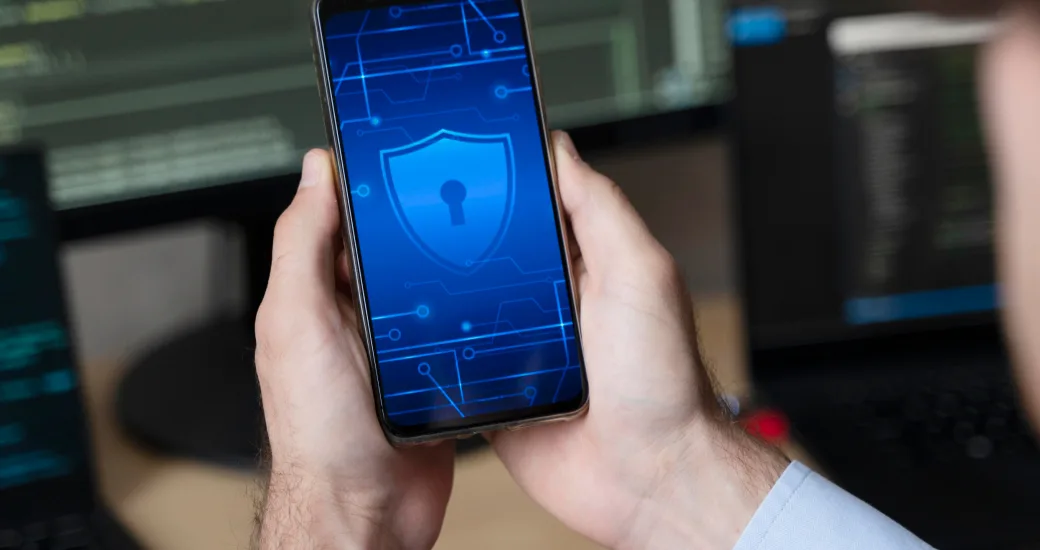
In today’s business world, having a secure mobile app is essential to stay ahead of the competition and to expand your market reach. With so many mobile app options available, it can be difficult to find one that is both easy to use and secure for your business data.
Mobile apps have been around for years, and they have become an integral part of our lives. A lot of people are now taking their businesses to the mobile world, but with this shift comes new challenges. Mobile apps are particularly vulnerable to cyber threats.
What Exactly is a Mobile App?
A mobile app is basically a small program that runs on a smartphone or a tablet and lets the user obtain a range of different services. They are great for businesses because they allow them to reach potential customers without having to be in their proximity. However, these apps can be hazardous for the user if they are not appropriately protected.
For business owners, the race has now gone to create the best and the biggest mobile application. We need to do that to ensure that we stay ahead of the competition, get the maximum number of customers, and provide them with a seamless experience of browsing through their products\services. But the question that most of us ask ourselves is how secure are the mobile applications that we are building, and how safe are our customers’ data? This blog will look at some of the ways that we can make mobile applications more secure.
There are some factors to be kept in mind while developing a secure mobile app. So without further ado, let’s cut to the chase and delve deeper into some of them.
Be Sure to Write a Secure Code
When cyberpunks or attackers attempt to invade an app, bugs and vulnerabilities are generally the first things they look for. Most likely, they will commence the process by reverse engineering your code and then tamper with the same. In order to do so, all that they require is a public copy of your app. The malicious code alone is responsible for many mobile devices being affected. A study has shown that more than 11.6 million mobile devices have been affected by malicious code.
It is extremely recommended to keep code security at the topmost priority from the initial stage to the end.
Here are a few of the factors you need to take into account while working on the code.
– It’s crucial to protect your code from being reverse-engineered by obfuscating and minifying it.
– Repeatedly test your code and fix any bugs that are exposed.
– Design your code in a way that it can be updated and patched with ease.
– Now, coming to the penultimate point, keep your code agile to make it easier to update at the user end in case any breach comes up.
– Lastly, it is advisable to utilise code hardening and code signing.
Data-in-transit Security
Many of us might have heard about the cases of privacy leaks and data theft if we keep a check on the industry’s ins and outs every now and then. Therefore, you must ensure any sensitive details or information that gets delivered from clients to services is secured from such data leaks and theft. It’s extremely recommended to consider using either SSL or a VPN tunnel.
Use Authorised APIs
Programmers often reuse authorization information when making API calls, which can cache the data locally and make it easy to access. However, this also creates a security risk, as hackers can potentially misuse this information to gain unauthorized access. To prevent this, experts recommend authorizing APIs centrally so that only authorised users can access the data.
Encrypt Data
Encryption is the process that allows us to encode information for data security. It’s important to encrypt every unit of data exchanged over your app. With encryption, you can encrypt plain text so that it is unreadable to anyone without the key. This means that even if data is stolen, criminals can’t read or misuse it.
Data encryption technology has come a long way – even organisations like NASA and the FBI need permission to access Whatsapp messages. If they can’t break through the encryption willfully, hackers won’t be able to either.
Use Proper Session Handling
When it comes to the sessions, people spend more time using their phones compared to Desktops, which can make session handling more difficult for the server. It is recommended to deploy the use of a token instead of using device identifiers to identify a session. This will help mitigate the risk. Tokens are something that can be revoked at any given time, which makes them very secure in terms of lost or stolen devices.
Using tokens for security purposes is a smart move, especially if you’re worried about lost or stolen devices. Since tokens can be revoked at any time, you can rest assured knowing that your security won’t be compromised if your device goes missing.
Use Tamper-Detection technology
Gone are the days when tampering with codes was an easy job for attackers. But that’s not the case anymore. There are now techniques enabling us to set off alerts wherever cyberpunks or attackers try to invade your app by tampering with your code or injecting malicious code. By setting forth active tamper detection, you rest assured that the code will not be able to function if modified at all. This can help prevent any malicious code from being executed and causing damage to your system.
Principle of Least Privilege
The principle of least privilege, also known as the law of least privilege, is the concept that code should have the fewest permissions possible. In other words, your app shouldn’t ask for any more permissions than what is absolutely necessary for it to function. For example, if your app doesn’t need access to the user’s gallery, then don’t request it. It is also advisable to avoid making unnecessary network connections. The permission you require through your app from the users mainly depends on the specifics of your app. Thus, be sure to perform threat modelling time after time as you update your code.
Use Cryptographic Tools & Techniques
Key management is a critical element of effective encryption – if your keys are compromised, all your encryption efforts will be for naught. Hardcoding keys make them easy for attackers to find and steal, so always keep them secured in secure containers. And never ever store them on the local device where they can be easily compromised – if someone gets access to the device, they’ll get access to the keys as well.
Some protocols that were once widely accepted, like MD5 and SHA1, are no longer up to par in terms of security. To strengthen the security, consider using the latest and most reliable APIs like 256-bit AES encryption with SHA-256 for hashing.
Backend Security
Most mobile applications have a client-server design, meaning that they rely on backend servers to function properly. This exposes them to potential security risks if these servers are not properly protected. Many developers mistakenly assume that only the app they’ve programmed can access the APIs it uses. However, this is not always the case. You should verify all your APIs in accordance with the mobile platform you’re coding for, as authentication and transport mechanisms can differ from one platform to another.
Strict Authentication
One of the leading causes of security breaches is the lack of high-level authentication. To add more security to the app, developers should consider building apps that should only accept solid alphanumeric passwords. Furthermore, it is advisable to keep reminding the users from time to time to change their passwords to reduce the possibility of risk.
For apps that require extremely sensitive data, you can use biometric authentication to add an extra layer of security. This could include using fingerprints or a retina scan. Keeping encouraging users to enable authentication and take security measures from their end, too, would be the best way to avoid any security breaches.
Final Words
In today’s business world, having secure mobile apps is more important than ever if you want to stay ahead of the competition and reach a wider market. With so many mobile app development company options available, it can be difficult to find one that will also help you keep your business data secure.
If you’re looking for an exceptional yet affordable company that can help you with the same, feel free to enlist our support.
At Saffron Tech, we specialise in creating custom apps for businesses of all sizes that are not only functional but also help businesses in a variety of ways. Our team of extensively experienced app developers goes above and beyond to provide our clients with the best app possible. On top of that, our app services are app development services and cost-effective as well as time-efficient.
Get in touch today! We will be more than happy to help.
Subscribe to Saffron Tech
Explore your marketing zen with our newsletter! Subscribe now.



